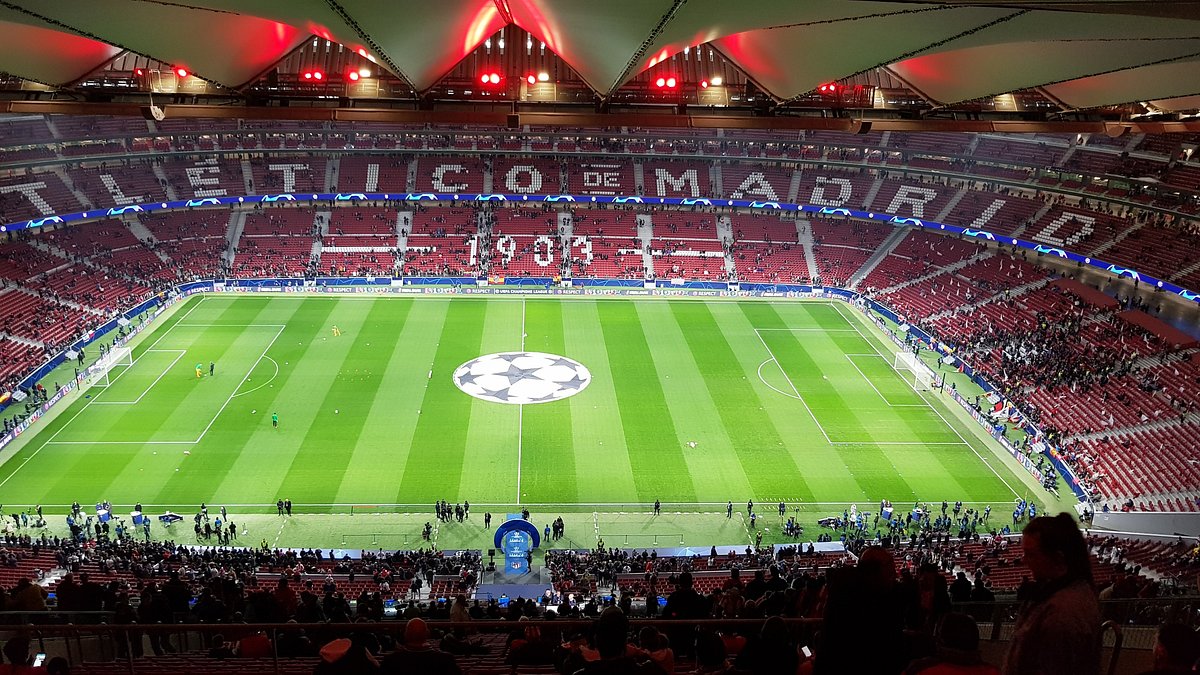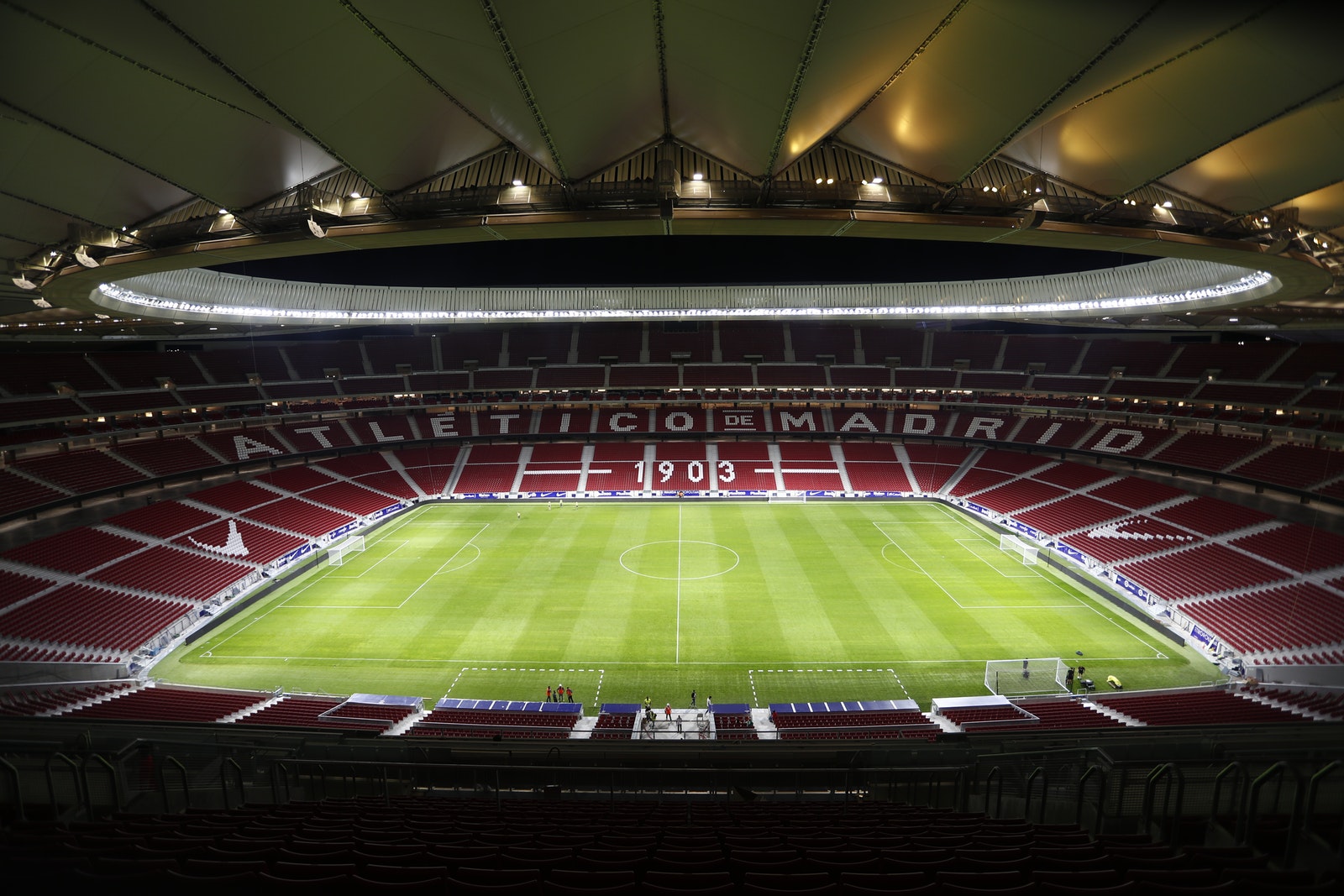Estadio Metropolitano, also known as Cívitas Metropolitano due to sponsorship reasons, is a modern stadium located in Madrid, Spain. This architectural marvel serves as the home ground for the prestigious football club Atlético Madrid, since the 2017-18 season. Situated in the Rosas neighborhood within the San Blas-Canillejas district, the stadium has become a symbol of pride for all Atlético supporters.
Boasting a seating capacity of over 68,000 spectators, the Cívitas Metropolitano is well connected to Madrid’s city center through various transportation options, including the Metro Line 7. The stadium is also a popular venue for large-scale concerts and offers a fascinating museum that is open to the public, showcasing the rich history of Atlético Madrid.
The Metropolitano has witnessed numerous impactful moments in football history since its inauguration in September 2017. Among its numerous accolades, the stadium hosted the UEFA Champions League Final in 2019, cementing its position as a world-class sports facility. With its combination of comfort, security, and excellent visibility, the Cívitas Metropolitano stands as an emblem of excellence in the realm of sports infrastructure.
History of Estadio Metropolitano

Construction and Inauguration
The Estadio Metropolitano, also known as Cívitas Metropolitano, was initially built as part of Madrid’s unsuccessful bid to host the 1997 World Athletics Championships. The stadium was officially opened on September 6, 1994, by the Community of Madrid. However, it was closed in 2004 due to the city’s unsuccessful bid for the 2016 Olympics.
In 2013, the stadium passed into the possession of Atlético Madrid, and underwent renovations to transform it into a football-specific venue. The renovated stadium was finally opened for the public on September 16, 2017, when Atlético Madrid faced Málaga in LaLiga.
Significant Events
Since its reopening, the Cívitas Metropolitano has hosted several notable events. Among them, the stadium was the venue for the UEFA Champions League Final in 2019. Additionally, the stadium has been the setting for numerous local games, including the intense rivalry between Atlético Madrid and Real Madrid. Record attendance at the stadium was achieved during a match between these two teams on September 28, 2019, with a total of 67,942 spectators.
With a modern design, the stadium meets high standards of comfort, security, and visibility for fans. Its current capacity is 68,456, and it has become an important landmark and source of pride for Atlético Madrid supporters.
Details of the Stadium

Seating Capacity
The Metropolitano Stadium, home to Atlético Madrid, has a seating capacity of 68,000 spectators. The modern design ensures that 96% of the seats are covered by the roof, providing a comfortable experience for fans attending matches and events.
Facilities
The stadium is equipped with state-of-the-art facilities suitable for hosting not only football matches but also large-scale concerts. In addition to the main seating area, the Metropolitano Stadium also features a fascinating museum open to the public, showcasing Atlético Madrid’s history and achievements.
- Accessibility: The stadium is designed to accommodate fans with disabilities, ensuring a comfortable and inclusive environment for everyone.
- Technological Advances: The Metropolitano is one of the most modern stadiums in Europe, featuring advanced lighting, sound, and communication systems to enhance the fan experience.
- Environmentally Friendly: The stadium’s architecture incorporates energy-efficient and sustainable design elements, reducing its overall environmental impact.
Location
Located in the Rosas neighborhood in the San Blas-Canillejas district of Madrid, Spain, the Metropolitano Stadium is well connected to the rest of the city by metro, making it easily accessible for fans. Positioned next to the M-40, Adolfo Suárez Barajas Airport, and IFEMA, the stadium enjoys a strategic location for both local and international visitors.
Atletico Madrid and the Stadium

Atlético Madrid, one of Spain’s most successful football clubs, has found their home at the Cívitas Metropolitano Stadium. This state-of-the-art facility, which can seat over 68,000 spectators, opened to the public on September 16, 2017. Not only does it host Atlético Madrid’s home games, but it also welcomes large-scale concerts and houses an interactive museum for fans to enjoy.
Key Matches
The inaugural match at Cívitas Metropolitano was on September 16, 2017, when Atlético Madrid faced Málaga in LaLiga. As the team’s home ground, the stadium has witnessed numerous memorable matches, including:
- UEFA Champions League: Atlético Madrid has competed against top European clubs in the prestigious tournament, showcasing their skills on the Cívitas Metropolitano pitch.
- LaLiga Derbies: The Madrid Derby is a significant event for fans, as it features Atlético Madrid clashing with their city rivals, Real Madrid. These intense matches are a highlight for the Cívitas Metropolitano’s electric atmosphere.
- Copa del Rey: As one of Spain’s premier domestic cup competitions, the Copa del Rey often sees Atlético Madrid facing off against other Spanish clubs at the Cívitas Metropolitano.
Fan Culture
Atlético Madrid’s fanbase is both passionate and dedicated, and the Cívitas Metropolitano Stadium provides the perfect environment for them to express their love for the team. Common elements of fan culture at the stadium include:
- Supporters’ section: The south end of the stadium is dedicated to die-hard Atlético fans, providing a designated area for them to sing, chant, and display banners throughout the match.
- Tour Cívitas Metropolitano: Fans can explore the stadium through guided tours, offering a behind-the-scenes look at the facilities, player dressing rooms, and pitch. Tickets for the tour can be purchased online.
- Territorio Atleti: This interactive space at the Cívitas Metropolitano allows fans to delve into the club’s history and values. It features immersive experiences designed to engage supporters of all ages.
Visitors can easily reach Cívitas Metropolitano via the nearby Estadio Metropolitano underground station on Metro Line 7, along with other public transportation options, making it accessible for fans to attend matches and events.
Impact on Local Economy
Employment
The opening of Metropolitano Stadium has had a positive impact on the local economy in terms of employment. The construction and operation of the stadium created numerous job opportunities for residents in the San Blas-Canillejas district. From construction workers and engineers to security staff and ticket sellers, many individuals have found new employment opportunities within the stadium and surrounding businesses.
Additionally, the presence of a top-level sports team like Atlético Madrid has attracted more investments in the area from both local and international businesses, which in turn, further boosts employment opportunities.
Tourism
Metropolitano Stadium also plays a significant role in attracting tourists to Madrid. Atlético Madrid’s home games are a major draw for both domestic and international fans, generating significant tourist revenue for the city. Beyond attending matches, visitors also contribute to the local economy by spending on accommodation, food, and entertainment in the city.
The Cívitas Metropolitano Stadium, with its interactive displays and facilities, offers additional tourism attraction for visitors to Madrid. Its interactive screens, virtual reality, and various games provide a unique and immersive experience for people, enabling them to learn more about the team’s history and witness memorable moments.
In conclusion, Metropolitano Stadium has positively impacted the local economy of Madrid by creating new employment opportunities and attracting tourism. Its presence in the city not only benefits residents but also leaves a lasting impression on visitors, further solidifying Madrid’s status as a leading tourist destination.
Future Plans for the Stadium

The Estadio Metropolitano, located in Madrid, Spain, serves as the home stadium for Atlético Madrid since the 2017-18 season. The stadium has been designed with modern European standards in mind, providing a comfortable and secure environment for spectators. As the stadium continues to evolve, there are future plans in place to ensure it remains a top-notch venue for sports and entertainment events.
One of the main strategies for the stadium’s future is upgrading its technological and digital infrastructure. This will enhance the spectator experience with improved internet connectivity, state-of-the-art audiovisual systems, and easy access to facilities and information through dedicated mobile apps.
In addition to technological enhancements, the stadium authorities aim to make Estadio Metropolitano more environmentally sustainable. Implementing green initiatives such as solar power, efficient waste management systems, and promoting public transportation will help reduce the stadium’s carbon footprint and contribute to a cleaner environment for the city of Madrid.
Atlético Madrid also plans to utilize the stadium’s potential to host other entertainment events and activities. Besides football matches, the Estadio Metropolitano could host concerts, exhibitions, and cultural events to increase its versatility and reach a wider audience. Expanding the stadium’s functionality will not only benefit the club but also positively impact the local community and economy.
Investing in better access and transportation links is another key aspect of future planning for the stadium. Improvements to public transportation, parking facilities, and pedestrian areas will ensure fans and event-goers can easily and conveniently access the Estadio Metropolitano. This inclusive approach will make attending events at the stadium an enjoyable experience for all.
By focusing on these future plans, the Estadio Metropolitano will continue to be a premier stadium in Europe, offering superb facilities and experiences for Atlético Madrid fans and event attendees alike.

